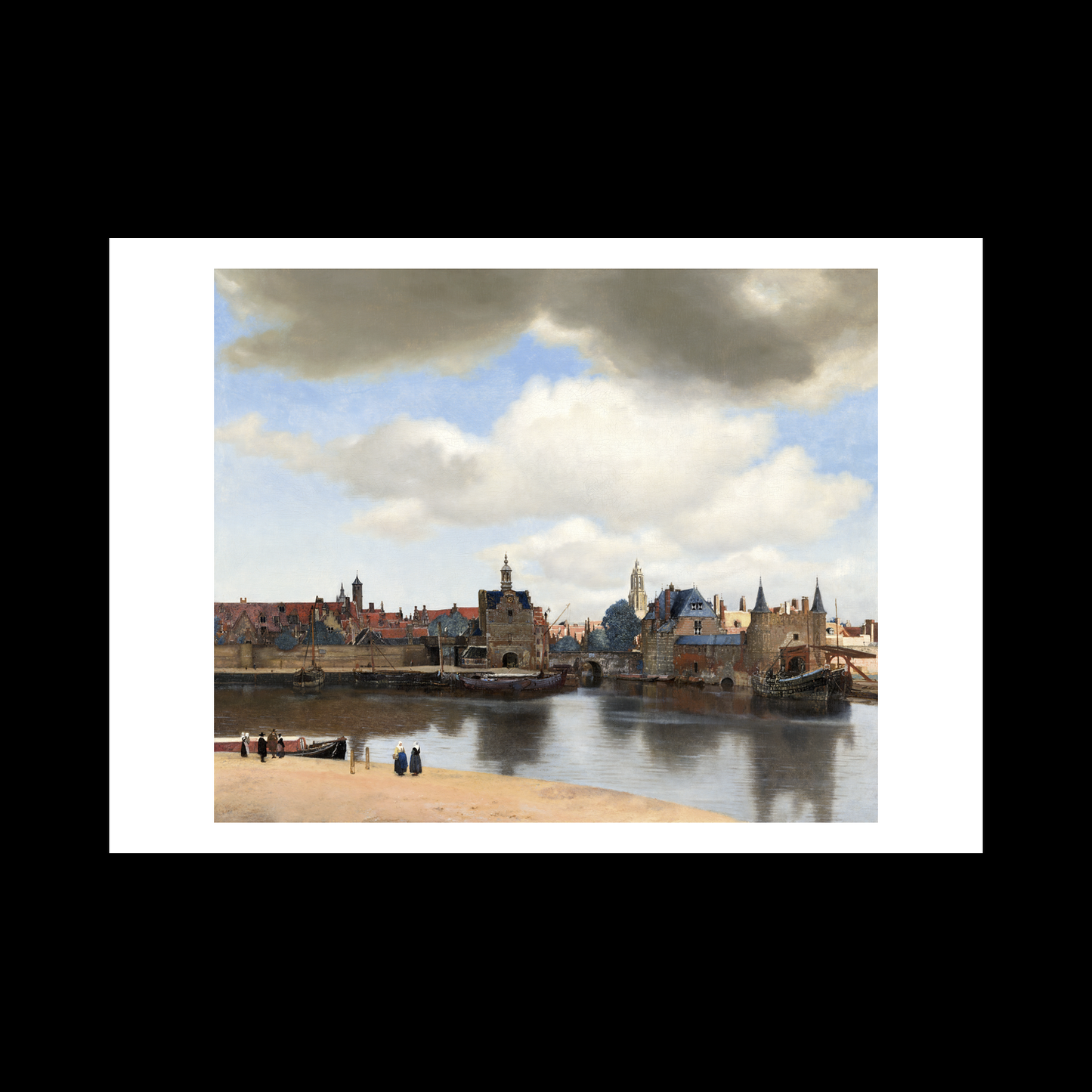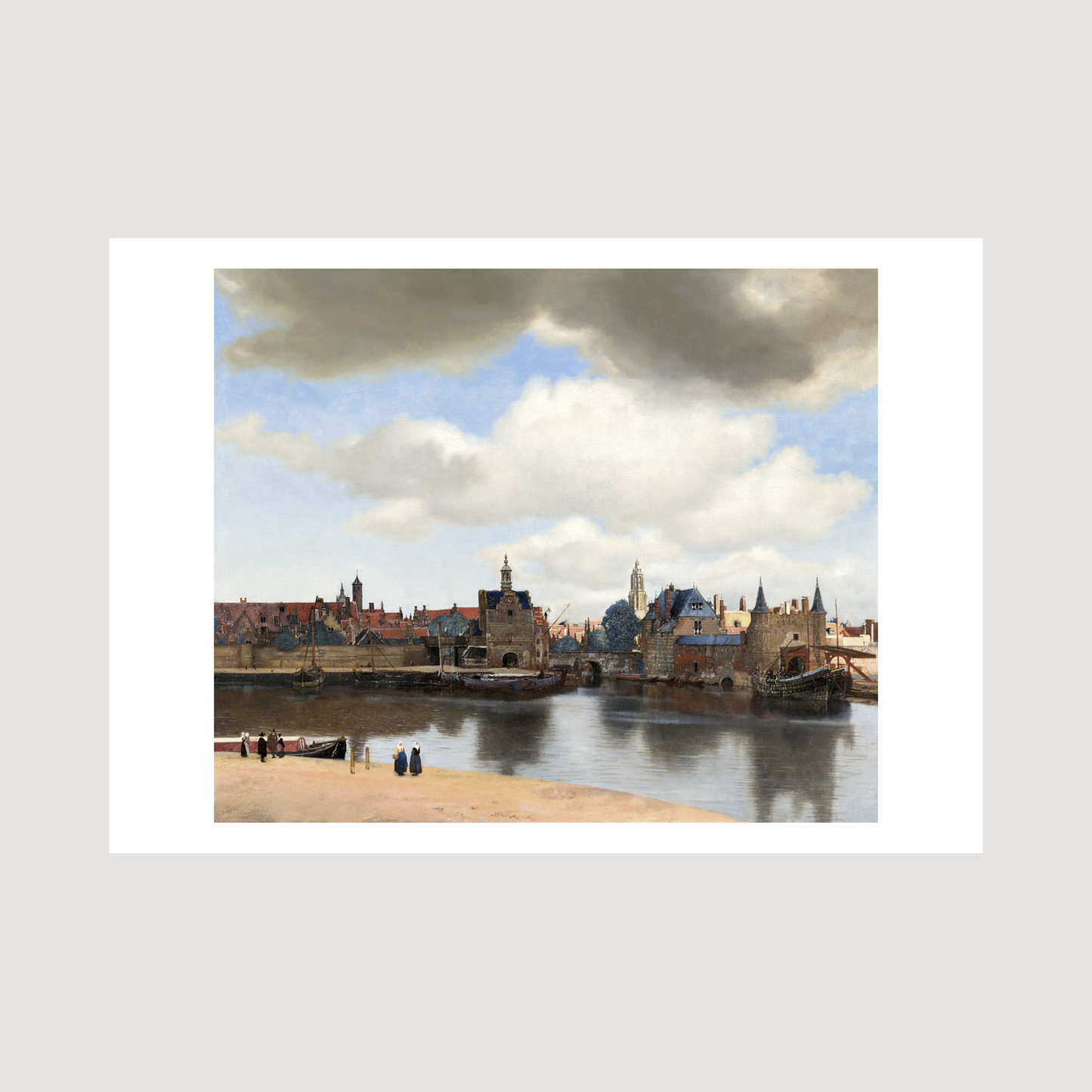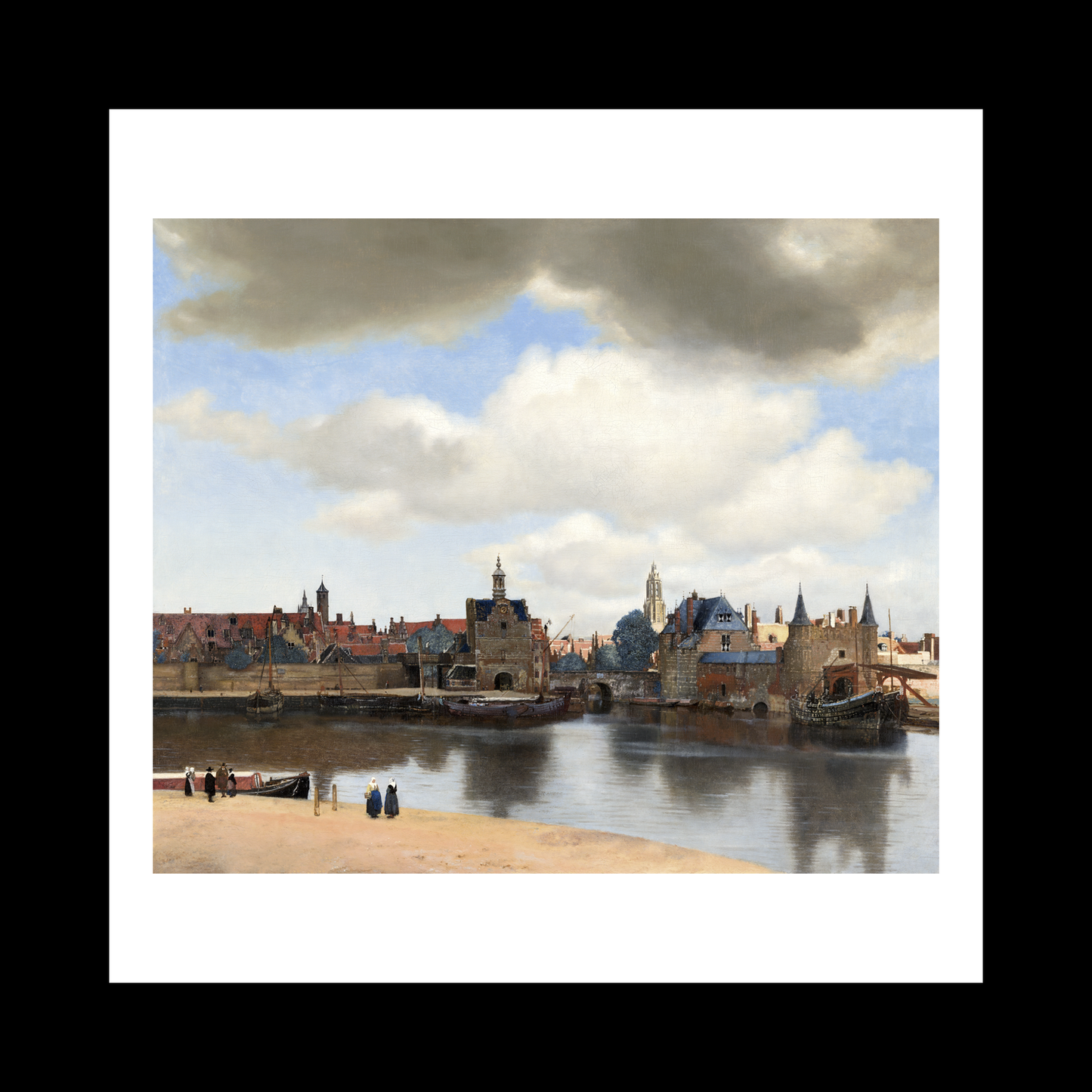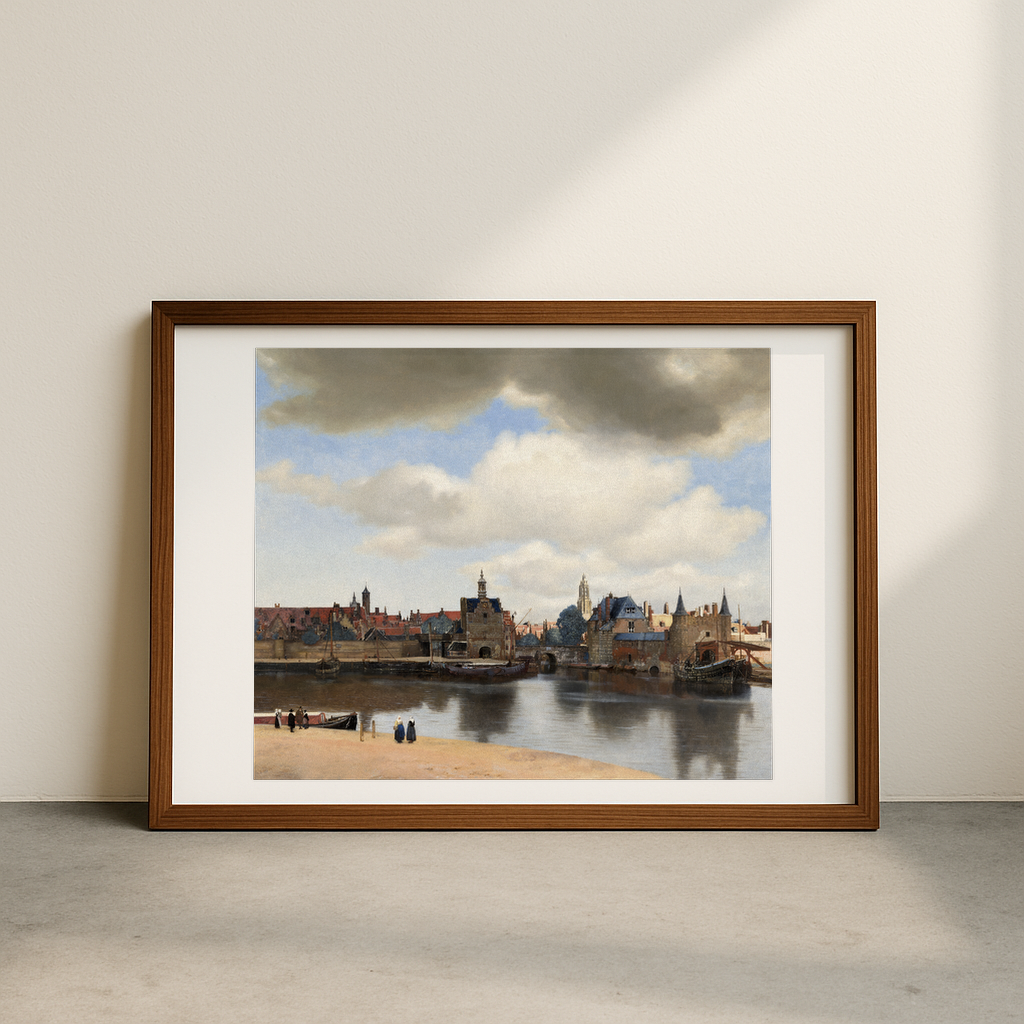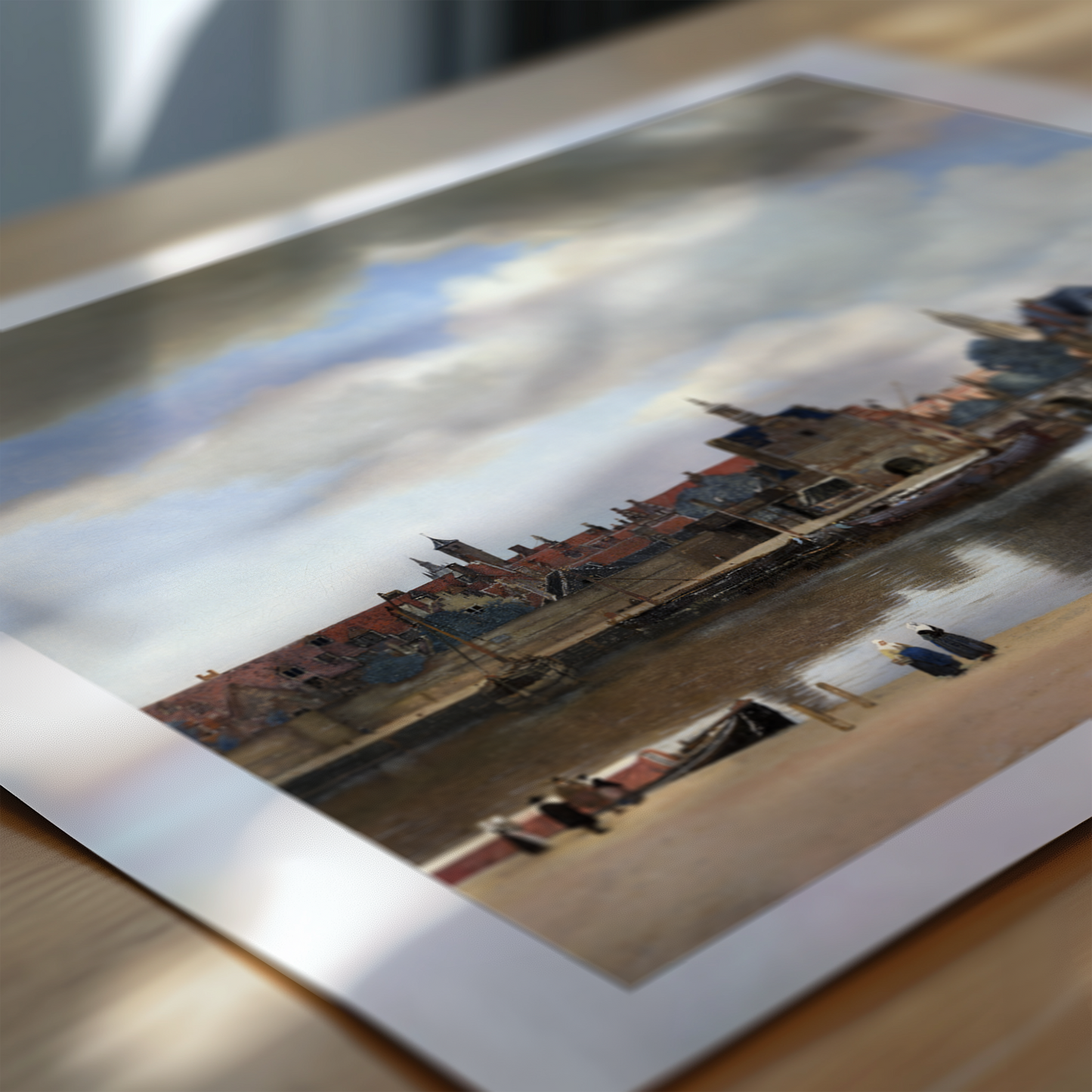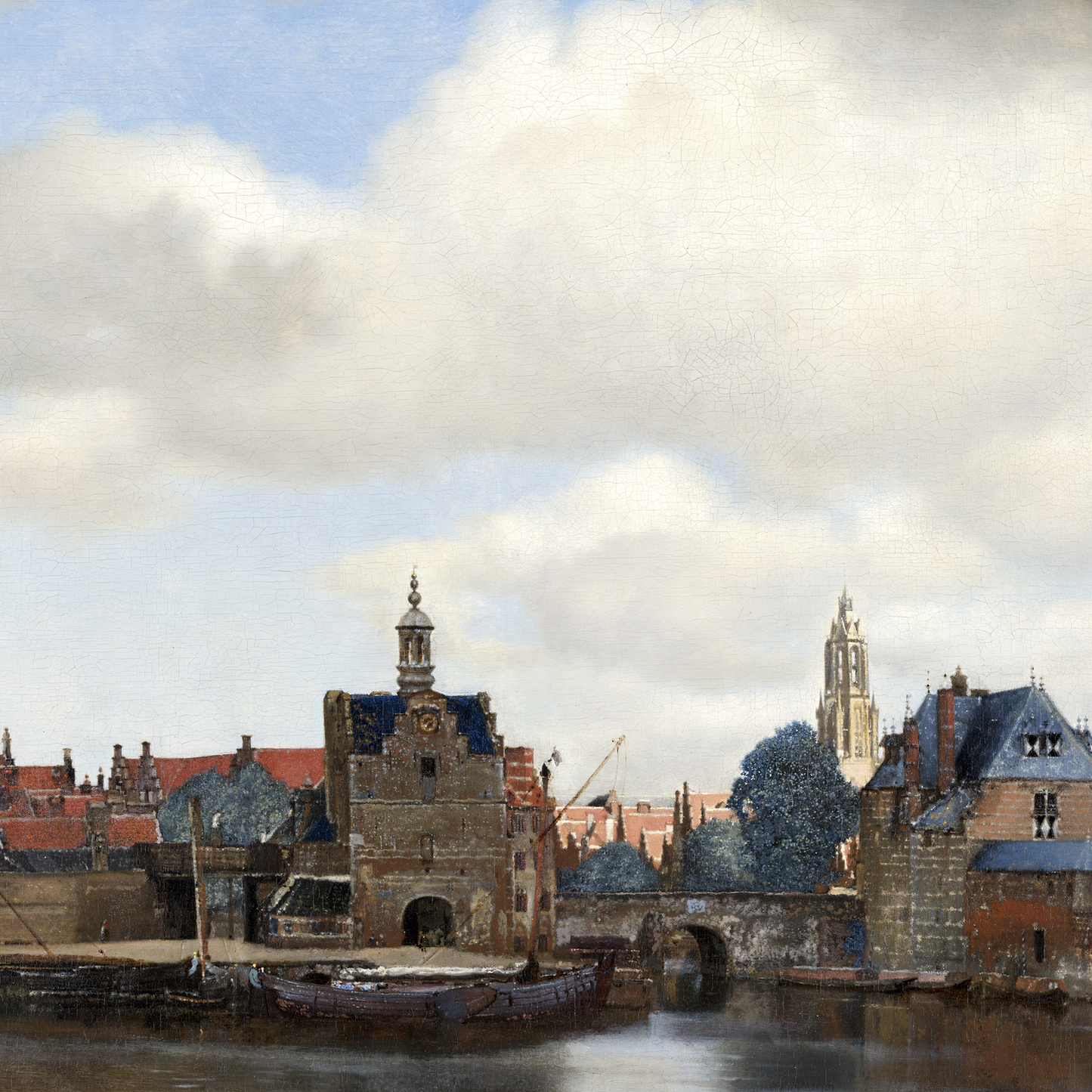1
/
of
6
View of Delft (1660-1661)
View of Delft (1660-1661)
Regular price
£12.45 GBP
Regular price
Sale price
£12.45 GBP
Taxes included.
Quantity
Couldn't load pickup availability
Vermeer's 'View of Delft' stands as one of the earliest and most refined cityscape paintings of the Dutch Golden Age. This panoramic view captures the city of Delft from the south, across the harbour, with meticulous attention to light, atmosphere, and architectural detail. The composition brilliantly balances the reflection of buildings in the water, the dramatic cloud-filled sky, and the bustling harbour activity, creating a scene that feels both monumental and intimately observed.
What makes this work particularly remarkable is Vermeer's innovative use of light and colour. He employed tiny dots of bright paint, known as 'pointilles', to create a luminous effect that captures the moisture-laden atmosphere of the Netherlands. The painting's most striking feature is its extraordinary depiction of sunlight breaking through clouds, illuminating specific buildings while leaving others in shadow, creating a sense of depth and temporal specificity that was revolutionary for its time.
The work holds special significance as one of only two known landscapes by Vermeer, who typically focused on intimate domestic scenes. Created during a period when Dutch cities were proud symbols of independence and prosperity, this painting reflects both civic pride and artistic innovation. Vermeer's choice to paint his hometown from this particular vantage point, emphasising its grandeur and beauty, speaks to the deep connection between artist and subject. The precise detail and atmospheric effects required multiple sessions of direct observation, demonstrating Vermeer's dedication to capturing the essence of his beloved Delft.
The view presents a perfect balance between documentary accuracy and artistic interpretation, with Vermeer subtly adjusting the scene's elements to achieve optimal compositional harmony. His use of expensive ultramarine blue in the sky and water, combined with earthy ochres and rich browns in the buildings, creates a colour palette that remains remarkably vibrant even after centuries.
View full details
What makes this work particularly remarkable is Vermeer's innovative use of light and colour. He employed tiny dots of bright paint, known as 'pointilles', to create a luminous effect that captures the moisture-laden atmosphere of the Netherlands. The painting's most striking feature is its extraordinary depiction of sunlight breaking through clouds, illuminating specific buildings while leaving others in shadow, creating a sense of depth and temporal specificity that was revolutionary for its time.
The work holds special significance as one of only two known landscapes by Vermeer, who typically focused on intimate domestic scenes. Created during a period when Dutch cities were proud symbols of independence and prosperity, this painting reflects both civic pride and artistic innovation. Vermeer's choice to paint his hometown from this particular vantage point, emphasising its grandeur and beauty, speaks to the deep connection between artist and subject. The precise detail and atmospheric effects required multiple sessions of direct observation, demonstrating Vermeer's dedication to capturing the essence of his beloved Delft.
The view presents a perfect balance between documentary accuracy and artistic interpretation, with Vermeer subtly adjusting the scene's elements to achieve optimal compositional harmony. His use of expensive ultramarine blue in the sky and water, combined with earthy ochres and rich browns in the buildings, creates a colour palette that remains remarkably vibrant even after centuries.
